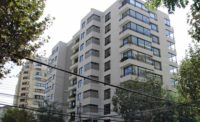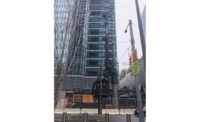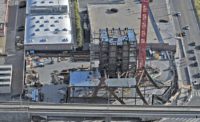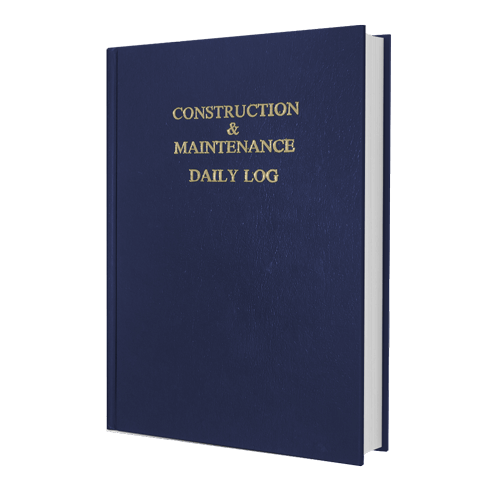Earthquake Engineering
NEHRP Recommendations Likely To Improve Seismic Design
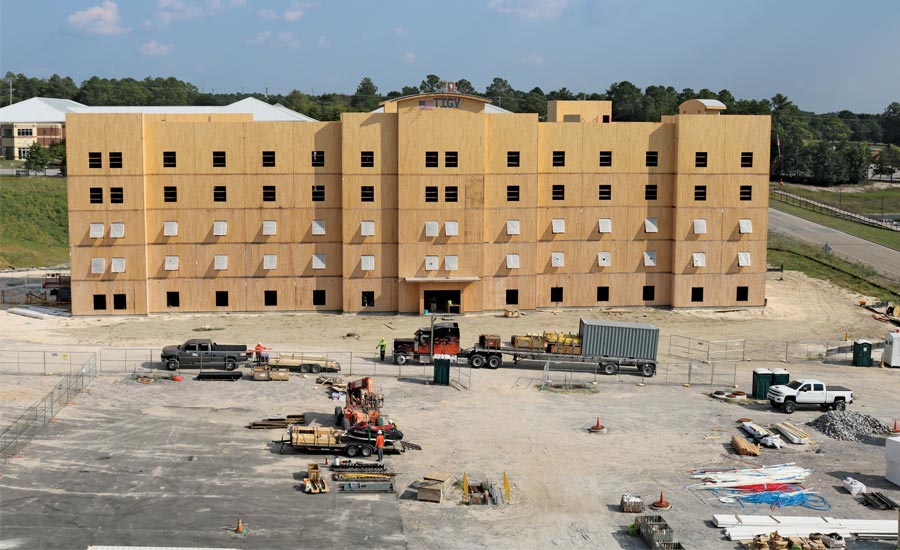
For the first time, the 2020 NEHRP provisions contain rules for the seismic design of cross-laminated timber wall systems.
Photo courtesy Lendlease
Code-based earthquake engineering is on the verge of getting simpler, thanks to the National Earthquake Hazards Reduction Program’s recommendation to replace the traditional seismic hazard maps with an improved seismic hazards database. The recommendation is one of the most significant changes put forth in the 2020 update of the NEHRP seismic design provisions, which are the foundation for the prescriptive seismic design code for buildings and other structures.
Using the database, engineers would only need to know the site’s soil type and the latitude and longitude of a project to get the desired design spectrum for a particular project. Currently, they have to do site-specific work to get that information, says David Bonneville, a senior principal with Degenkolb Engineers and the chair of the provisions update committee that produced the 872-page tome "2020 NEHRP Recommended Seismic Provisions for New Buildings and Other Structures."
Hazard Maps No Longer Printed
The maps would no longer be printed in the design standard. Instead, engineers and other stakeholders will be able to access the hazards database, developed and maintained by the U.S. Geological Survey (USGS), through a digital user-interface tool. Using the database will make the work of engineers “a lot easier,” Bonneville says. It will also save engineers time and money because it eliminates the need, in most cases, for a study of the site by a geotechnical engineer, he adds.
The NEHRP update, released last month, not only replaces the printed seismic hazard maps with a database, it includes major changes to the way ground motions are defined for design purposes. Multiperiod response spectra replace the traditional two-period spectra. This virtually eliminates the need for site-specific hazard analysis required by code for soft soil sites, Bonneville says.
In addition, the improved USGS database now includes “explicit representation of basin effects in ground motion calculations” in the Los Angeles, Seattle, San Francisco and Salt Lake City areas. This is “significant,” says Jiqiu (JQ) Yuan, executive director of the Building Seismic Safety Council (BSSC) of the National Institute of Building Sciences.
The 2020 NEHRP provisions, known as FEMA P-2082, were developed by the BSSC and funded and published by the Federal Emergency Management Agency. The first two sections of the NEHRP update present a set of recommended improvements and commentary to the ASCE/SEI 7-16 Standard: Minimum Design Loads and Associated Criteria for Buildings and Other Structures, published by the American Society of Civil Engineers Structural Engineering Institute.
The recommendations are under consideration for adoption in the upcoming new edition of the standard—ASCE/SEI 7-22. Balloting is underway and should be complete in April. A public comment period will follow. The new standard is on course for publication in December 2021, says Jennifer Goupil, SEI’s senior manager for engineering. After its publication, ASCE/SEI 7-22 would be considered for adoption in the 2024 version of the model International Building Code.
Data Would Be Legally Binding
In the past, the USGS database was a convenience tool. That would no longer be the case. “The legally binding part of the [standard] would be the data,” says Goupil.
For example, authorities having jurisdiction will no longer be able to open the standard’s printed version and find the design value, which was formerly given on a map. Permitting officials—and all others—will have to use the USGS database, which will be available free of charge.
The impetus for change is that the maps have only been useful for structures in lower or moderate seismic regions. For structures in higher seismic zones, engineers were not able to extract design values because the maps lack granularity. For years, to obtain design values, engineers with projects in zones of high seismicity would have to use USGS website anyway. There, they entered latitude and longitude and soil type into the database.
“In the 2020 cycle, in addition to acknowledging the shortcomings of the maps, we’re confronting the need to address the spectral shape issue, which introduces the need to specify not only latitude and longitude and soil type, but also a full range of building periods—20 separate values,” says Bonneville. “When we added that new complexity to the lack of granularity issue, we all admitted that there’s no point in continuing with the maps,” he adds.
For the first time, the 2020 update also puts forth rules for the seismic design of two ductile shear-wall systems. One is a reinforced concrete coupled shear wall. The other is a coupled steel dual-plate, concrete-filled shear wall system, known as SpeedCore.
Both systems, considered useful in mid- and high-rise construction, derive significant energy dissipation capacity through coupling beam yielding. The resulting overall seismic behavior is expected to be superior to the currently defined special shear wall systems, which do not specifically consider the configuration of internal wall elements, says Bonneville.
Cross-Laminated Timber Walls
Another first in the recommendations are seismic design rules for cross-laminated-timber wall systems. There are also new floor diaphragm provisions, including for one-story rigid wall-flexible roof buildings, and new bare metal-deck design provisions. The 2020 update also includes new provisions for the seismic design of nonstructural components.
The NEHRP provisions are developed and evaluated through consensus, every five years. The recs are based on results and findings from myriad research projects, problem-focused studies and post-earthquake investigation reports.
There were more than 130 subject matter experts involved in the NEHRP update, including structural engineers, seismologists, geotechnical engineers and building officials. A group of 39 BSSC member organizations, representing building owners, construction materials industries, earthquake research institutes, architects, government agencies and engineering associations also participated in the vetting and approval process. This was in addition to the participation of the four NEHRP agencies: FEMA, the National Institute of Standards and Technology, the National Science Foundation and USGS. For example, the update of the seismic design value maps was a collaboration of FEMA, BSSC and USGS, says Yuan.
The committee and its subject matter experts developed and deliberated 50 technical change proposals. Of these, 37 gained consensus approval and are incorporated into the NEHRP publication.
“We are continually learning about the best ways to do seismic design,” says John Hooper, director of earthquake engineering for Magnusson Klemencic Associates and a member of the 2020 NEHRP provisions committee. “As we’ve progressed, we’ve increased the reliability of how buildings will reach intended performance targets during ground motions,” adds Hooper, who as chair of ASCE/SEI’s seismic task committee is charged with shepherding the NEHRP provisions through the adoption process for ASCE/SEI 7-22. Hooper and others expect the provisions to be accepted, though there may be some modifications.
Resilience-Based Quake Design on the Horizon
The third section of the 2020 recs is forward-looking and has little to do with code rules. It includes nine resource papers on new concepts, suggested future development and technical information in support of the recommended improvements. For example, one paper addresses the potential relationship between future NEHRP provisions and resilience-based earthquake design, especially in the context of definitions and priorities established in federal law by the 2018 NEHRP reauthorization.
In the prescriptive code, rather than designing for life safety only, designing for resilience means designing for functional recovery. That would involve engineering a structure to have a shorter recovery or repair time after a quake, to minimize business or occupancy disruption.
There is an increasing push for design standards that incorporate the element of recovery time, says Yuan. In response, for the first time, “we’ve actually proposed a plan for developing a set of provisions in the next cycle that truly address functional recovery, including the time-to-recovery element,” adds Bonneville.


